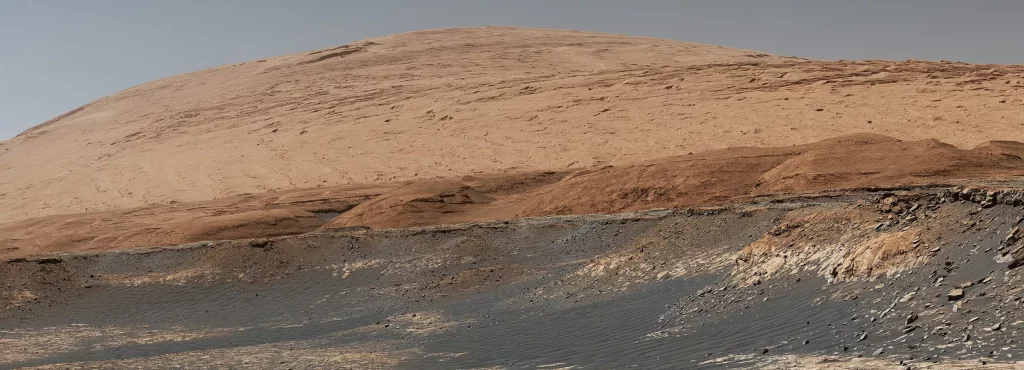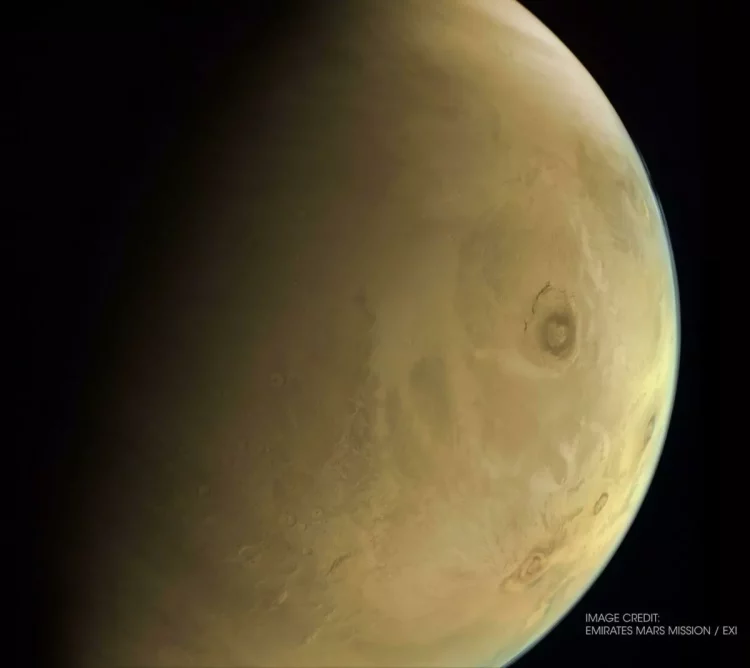Mars, often referred to as the “Red Planet,” has captivated human imagination and scientific inquiry for centuries. Its intriguing features, potential for past life, and future exploration make it a key focus in the quest to understand our Solar System and the potential for life beyond Earth. This comprehensive guide delves into Mars’ physical characteristics, geological features, atmospheric conditions, exploration history, and its significance for future human missions.
I. Overview of Mars
1. Basic Facts
- Size and Mass: Mars is the fourth planet from the Sun and the second smallest planet in the Solar System, with a diameter of about 6,779 kilometers (4,212 miles). Its mass is approximately 0.107 times that of Earth, making it about 10.7% as massive as our planet.
- Orbit and Rotation: Mars orbits the Sun at an average distance of about 227.9 million kilometers (141.6 million miles), taking approximately 687 Earth days to complete one orbit. A Martian day, known as a “sol,” is about 24.6 hours, making it quite similar to an Earth day.
- Seasons: Mars experiences seasons due to its axial tilt of about 25.2 degrees, which is similar to Earth’s 23.5 degrees. However, Martian seasons last about twice as long due to its longer orbit around the Sun.
2. Appearance and Surface Features
- Color and Surface: Mars is known for its reddish appearance, which is due to iron oxide (rust) on its surface. The planet’s surface is characterized by a range of features, including vast plains, towering volcanoes, and deep canyons.
- Polar Ice Caps: Mars has polar ice caps composed of water ice and dry ice (frozen carbon dioxide). These caps grow and recede with the changing seasons, providing clues about the planet’s climatic patterns.
II. Geological Features of Mars
1. Major Landforms
- Volcanoes: Mars is home to some of the largest volcanoes in the Solar System. Olympus Mons, the tallest volcano and mountain, stands at about 22 kilometers (13.6 miles) high with a diameter of approximately 600 kilometers (373 miles). Another prominent volcano is Tharsis Montes, a group of three large shield volcanoes.
- Canyons: Valles Marineris is one of the most striking features on Mars. This vast canyon system stretches over 4,000 kilometers (2,500 miles) and reaches depths of up to 7 kilometers (4.3 miles). It is believed to have formed through a combination of tectonic activity, erosion, and volcanic processes.
- Impact Craters: The Martian surface is covered with impact craters from collisions with asteroids and comets. Notable craters include Hellas Planitia, one of the largest impact basins in the Solar System, and the 155-kilometer-wide (96-mile-wide) Gale Crater, where NASA’s Curiosity rover has been exploring.
2. Surface Composition
- Regolith: The Martian regolith, or soil, is composed of a mixture of fine dust, rocky debris, and minerals. It contains iron oxide, giving it a reddish hue, and is also rich in silicate minerals.
- Sedimentary Rocks: Evidence from Mars rovers, such as Curiosity and Perseverance, has revealed sedimentary rocks that suggest the presence of ancient lakes and river systems, providing insights into the planet’s past climate and water history.

III. Martian Atmosphere
1. Composition and Characteristics
- Atmospheric Composition: Mars has a thin atmosphere composed mainly of carbon dioxide (about 95.3%), with traces of nitrogen (2.7%) and argon (1.6%). There are also small amounts of oxygen and water vapor.
- Pressure and Density: The atmospheric pressure on Mars is less than 1% of Earth’s atmospheric pressure at sea level. This thin atmosphere contributes to extreme temperature fluctuations and challenges for potential human exploration.
- Weather and Climate: Mars experiences significant temperature variations, ranging from about -125 degrees Celsius (-195 degrees Fahrenheit) near the poles during winter to about 20 degrees Celsius (68 degrees Fahrenheit) at the equator during summer. The planet also experiences dust storms that can envelop the entire planet, influencing climate patterns and visibility.
2. Water and Ice
- Water Vapor: Mars has trace amounts of water vapor in its atmosphere. Seasonal variations in water vapor contribute to the formation of frost and clouds.
- Ice Deposits: Water ice is present at the polar ice caps and in the subsurface. Observations from orbiters and landers have confirmed the presence of subsurface ice, which is crucial for understanding the planet’s potential to support life and future human colonization.
IV. Exploration History
1. Early Observations
- Telescopic Studies: The first detailed observations of Mars were made through telescopes in the 17th century. Notable astronomers like Galileo Galilei and Giovanni Schiaparelli made early observations of Martian features and surface markings.
- Mariner Missions: NASA’s Mariner missions in the 1960s and 1970s provided the first close-up images of Mars, revealing the planet’s surface features and confirming its arid conditions. Mariner 4, launched in 1964, was the first spacecraft to fly by Mars and send back images.
2. Robotic Missions
- Viking Missions: The Viking 1 and Viking 2 missions, launched in 1975, were the first to land on Mars and return detailed images and scientific data. They provided information about the planet’s surface composition, weather, and potential for life.
- Mars Rovers: The Mars rovers have been instrumental in exploring the planet’s surface and conducting experiments. Notable rovers include:
- Spirit and Opportunity: Launched in 2003, these rovers conducted extensive exploration of the Martian surface. Opportunity discovered evidence of past water activity, while Spirit contributed to understanding the planet’s geology.
- Curiosity: Launched in 2011, Curiosity has been exploring Gale Crater and studying Martian rocks and soil. It has made significant discoveries about the planet’s habitability and past environmental conditions.
- Perseverance: Launched in 2020, Perseverance is exploring the Jezero Crater and searching for signs of ancient life. It is also testing new technologies for future human missions and collecting samples for possible return to Earth.
3. Orbital Missions
- Mars Reconnaissance Orbiter (MRO): Launched in 2005, MRO has been providing high-resolution images and data about the Martian surface, climate, and geology. It has detected water ice, studied dust storms, and identified potential landing sites for future missions.
- Mars Express: The European Space Agency’s Mars Express mission, launched in 2003, has been studying the Martian atmosphere, surface, and subsurface, and has discovered evidence of water ice and potential liquid water.
- Tianwen-1: China’s Tianwen-1 mission, launched in 2021, includes an orbiter, lander, and rover. It aims to study Mars’ geology, atmosphere, and surface features, and has successfully landed the Zhurong rover on the planet’s surface.
V. Scientific Significance and Future Prospects
1. Search for Life
- Past Life: Mars has long been a focus in the search for extraterrestrial life due to evidence suggesting it once had liquid water. Studies of Martian rocks and soil aim to determine whether the planet ever supported microbial life.
- Extremophiles: Research into extremophiles—organisms that can survive in extreme conditions on Earth—provides insights into how life might exist in the harsh environments of Mars. Understanding extremophiles helps in assessing the potential for similar life forms on Mars.
2. Human Exploration and Colonization
- Challenges: Human missions to Mars face numerous challenges, including the thin atmosphere, radiation exposure, and the need for sustainable life support systems. Engineers and scientists are developing technologies to address these challenges and ensure the safety and success of future missions.
- Habitat and Resource Utilization: Developing habitats and life support systems for Mars missions involves using local resources, such as water ice, to produce oxygen and fuel. In-situ resource utilization (ISRU) is crucial for establishing a sustainable human presence on Mars.
- Mars One and Other Initiatives: Organizations like Mars One and national space agencies have proposed plans for human missions and potential colonization of Mars. These plans include establishing research bases, developing habitat modules, and conducting long-duration missions to test technologies and life support systems.
3. Mars as a Laboratory for Understanding the Solar System
- Planetary Science: Mars provides a unique opportunity to study planetary processes and compare them with those on Earth and other celestial bodies. Understanding Martian geology, climate, and atmospheric conditions helps scientists gain insights into planetary evolution and climate change.
- Planetary Defense: Studying Mars’ surface and its impact cratering history helps in understanding the potential risks posed by asteroid and comet impacts. This knowledge is valuable for developing strategies to protect Earth from


















































Discussion about this post